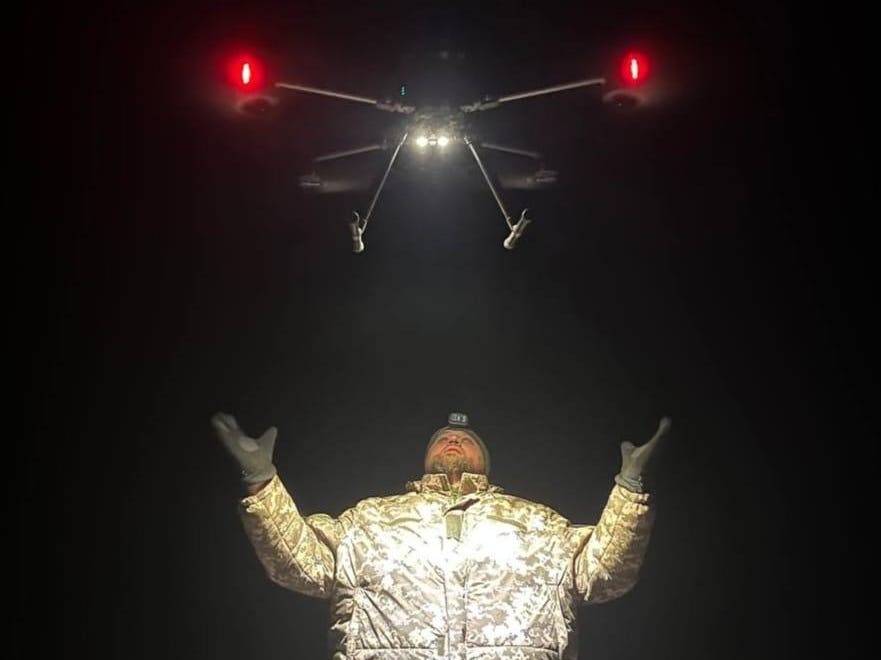There was a time, not long ago, when the Ukrainian armed forces had a drone advantage over the Russians. The Ukrainians had more and better drones than the Russians did—and used them more effectively.
That has changed. “We are starting to fall behind significantly,” Ukrainian drone pilot Mykola Voroshnov told UNIAN, a Ukrainian news agency.
It’s not that the Ukrainian drone operators have given up. Over the contested town of Vuhledar in southern Ukraine’s Donetsk Oblast, as many as 20 small drones at a time—Russian and Ukrainian—crisscross the sky, Voroshnov said. “It’s like a crossroads in India!” Collisions are common, he claimed.
But the Kremlin successfully has institutionalized the acquisition of small drones, including speedy first-person-view racing drones—costing just a few thousand dollars apiece—that operators can fit with explosives and fly directly into enemy vehicles and trenches.
The Russians are buying FPV drones by the hundreds and training regular troops to fly them via virtual-reality headsets, while the Ukrainians largely still rely on donations to buy FPV drones—and volunteers to operate them.
Rumors that the government in Kyiv is setting up factories for large-scale FPV drone production remain just that: rumors. “Vertical lines of management, vertical lines of supply, do not exist,” Voroshnov lamented.
The Russian armed forces in recent months have devised new tactics combining swarms of explosives-laden Lancet drones with satellite-guided glide-bombs—ranging 25 miles or farther—dropped by supersonic manned fighter-bombers. The Ukrainians sometimes refer to the FAB and UPAB glide-bombs as “KAB” bombs, a reference to an older Russian bomb type.
It all starts with aerial reconnaissance by Russian Orlan, Zala or Supercam drones carrying day-night cameras. The recon drones spot Ukrainian forces, and then the Lancets, FPV drones and fighter-bombers zero in. “They identify targets and launch Lancets, releasing them in swarms along with KABs,” explained Ukrainian soldier Olexandr Solon’ko.
The Russians count on raw numbers to help the drone swarm to penetrate Ukrainian air-defenses. The Ukrainians might shoot down a dozen drones, but a dozen more slip through. “They attempt to break through and hunt down vehicles,” Solon’ko wrote.
Air-defenses on both sides of Russia’s 19-month wider war on Ukraine now include drone-jammers: handheld, vehicle-mounted or mast-mounted devices that fry drones with microwave radiation, scramble the radio signals that link them to their operators or block their satellite-navigation links.
The Russian jamming is effective, Voroshnov said. “Six months ago, this was not the case: we could fly anywhere, as we wanted,” he moaned. “Now, if you enter at a low altitude, the anti-drone [systems] will definitely work on you.”
Voroshnov stressed that there are countercountermeasures—perhaps an unspoken reference to frequency-hopping controls that stay just ahead of Russian jamming.
“We find ways,” he said. “This is the kind of war here: the enemy complicates the task, you look for other ways. He closed the window [so] you enter through the back door. They invent something; we look for a way to bypass their developments.”
All that is to say, the drone campaign over Ukraine no longer is Ukraine’s to win. The two armies at best have achieved a kind of aerial parity: each swarming the other, all the time. “Equipment and personnel can be spotted from a distance and targeted,” Solon’ko explained. “Both sides understand that there are limited places for positions and deployment.”
If there’s a main lesson for the Ukrainians and their allies in the Russians’ dramatic drone catch-up over the last year, it’s an old one. Never underestimate your enemy.
“It’s annoying when the enemy is called stupid in our news,” Voroshnov said. “This scornful attitude affects the military, as well. Many treat the Russians lightly—as idiots. But it is not so.”



The use of drones, and counter drone weapons, will be a hot topic over the next decade I think.
Seeing drones dropping ordinance on soldiers with apparent impunity has been interesting to see.